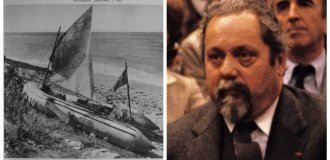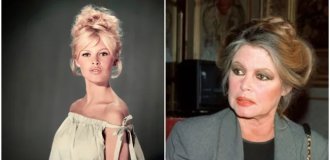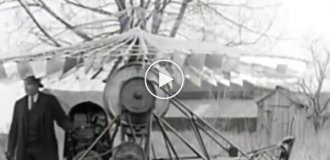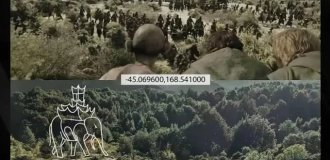Curious photos from the past of Great Britain (21 photos)
A selection of unique and interesting photographs from the UK, capturing moments from the early and mid-20th century. All the pictures have been carefully coloured. 
A poor family having a bread lunch in Shadwell, East London, 1920. 
Boys boxing barefoot on the street in Shadwell as a crowd of their friends watch. London, 1920. 
Salisbury Cathedral. UK, 1949. Salisbury Cathedral is one of the most outstanding Gothic buildings in England and a major architectural monument. Its construction began in 1220 and lasted for about 38 years. The cathedral amazes with its grandeur and harmony. Its main tower reaches a height of 123 meters and remains one of the tallest church towers in Great Britain. The interior of the cathedral is distinguished by the lightness and airiness typical of the Gothic style: pointed arches, soaring columns and huge stained glass windows create a feeling of light and space. 
Photographer: Kurt Hutton
Boating. Oxford, 1904. 
Seven-year-old Mavis Hughes arrives for a Thanksgiving service at St Mary Magdalene Church on Old Kent Road, London, 1951. 
Beauty contestants put paper bags over their heads at Blackpool Baths, 1937. In the mid-20th century, beauty contests were popular where not the overall beauty of the girls was assessed, but beauty contests of, so to speak, individual parts of the female body. For example, to allow the jury to evaluate the beauty of women's legs, women's figures were hidden under shapeless robes, masks or bags were put on their faces, leaving only their legs exposed. It was believed that such judging would be more objective. Therefore, most likely, this photo is not the beauty contest that we all know well, but a figure or waist contest. 
Photographer: Arthur Tanner
A group of punks in Edinburgh, Scotland, 1983. Punk culture emerged in the mid-1970s as a response to the social, political and cultural changes of the time. It arose in the wake of protest against the mass commercialization of music, the decline of 1960s ideals, and growing dissatisfaction among young people with politics, economics, and society. The punk movement began in the United States and Great Britain almost simultaneously, but with different emphases. In Great Britain, punk took on a more aggressive and socially critical character. Here, it became not only a musical but also a cultural phenomenon, reflecting the protest of the working class against unemployment, poverty, and the policies of Prime Minister Margaret Thatcher. Bands like the Sex Pistols, The Clash, and The Damned became symbols of British punk. 
An elderly woman stands among rubbish in a Liverpool slum alley, 1957. 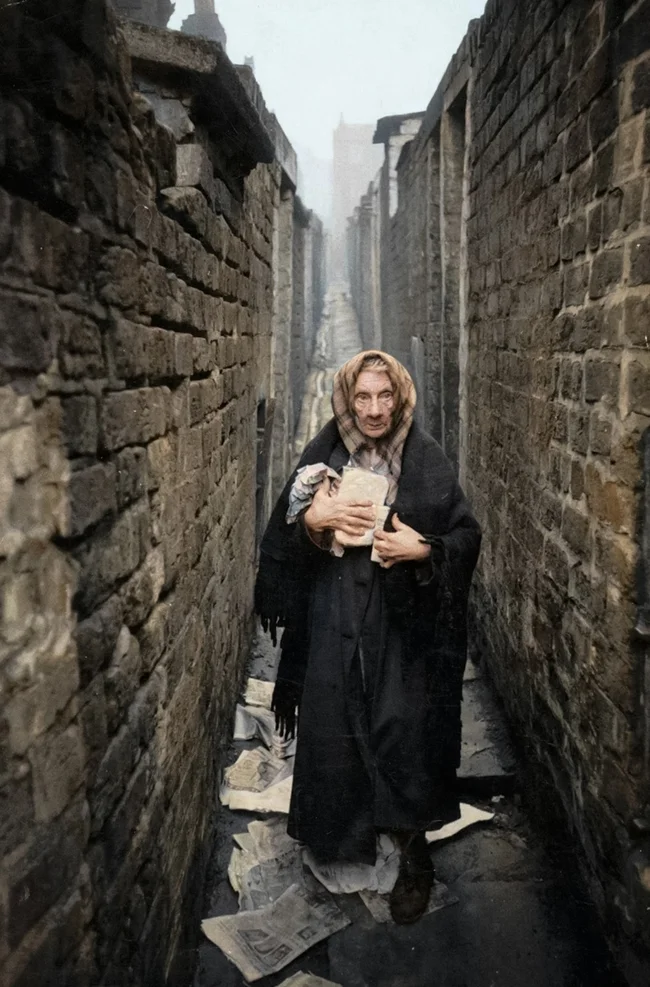
Photographer: Thurston Hopkins
The first strip club in London, 1958. The first strip club in London, Raymond Revuebar, opened on April 21, 1958 in the heart of Soho. This club was a real breakthrough in the British entertainment industry and symbolized a new era when traditional conservatism of society began to coexist with more daring forms of self-expression. The founder of Raymond Revuebar was Paul Raymond, who would later be called the "King of Soho". He managed to combine elements of striptease, popular in France, with the club atmosphere typical of the UK, creating a unique space where spectators could enjoy erotic performances in an intimate setting. 
The British airship R-100 about to take off for Canada. Bedfordshire. UK, 1928. The R-100 airship, known as "Her Majesty's Airship", was one of the most ambitious British aviation projects of the early 20th century. This giant of the air was a rigid airship, developed as part of the British civil aviation development program. Its creation was a response to similar projects in other countries, especially Germany, which at the time dominated the field of airship construction. The main purpose of the R100 was to demonstrate the possibility of using airships for passenger transportation between Great Britain and other countries, including Canada and India. 
A child from a poor family. Liverpool, 1956. In the outskirts of Liverpool, where 88,000 homes were declared unfit for habitation, a depressing picture unfolds. Long overshadowed by the prosperous parts of the city, these areas have become a symbol of serious social and economic problems. Crumbling buildings, unsanitary conditions and high population density create conditions that are far from the minimum standards of comfortable living. 
Photographer: Thurston Hopkins
A boy hoeing a hoe in a children's play area, Lambeth Walk, London, 1955. 
Beware of animals! Road sign in Lyndhurst, New Forest, 1955. 
British Telecom mascot Buzby helps launch the company's new gardening service, Woolworth Gardenline, with model Holly by his side. England, 1981. Buzby is a yellow (later orange) talking cartoon bird introduced in 1976 as part of a marketing campaign. Buzby appeared in a series of television commercials with the tagline: "Make someone happy with a phone call". The campaign spawned a range of marketing products, including toys, badges, a TV Comic and books, and continued into the 1980s. British Telecom produced and sold a "Buzby" wristwatch with Buzby on the second hand. 
Wives waving as a troop train departs. England, 1940s. 
Photographer: Bert Hardy
Cows crossing the road, 1933. 
Photographer: Norman Smith
A worker in a chocolate factory. Bedford, England, 1936. 
Embankment. Clovelly, Devon, 1904. 
A family with six children from the East End of London, July 1912. 
Seasonal Flight A female pilot prepares to take a goose and a large sprig of mistletoe on a Christmas flight, 1934. 


